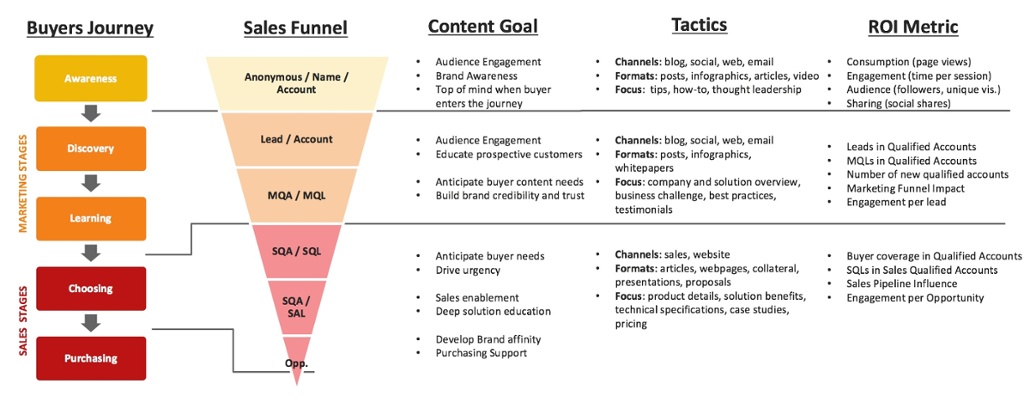Developing a content journey to support your Buyers Journey— as well as your Sales team’s needs— is a task that requires research and planning. Below are best practices for building an effective plan. 
- Understand your Buyers. The first step to building your content journey is to understand the Needs of each Buyer at each Stage of their Journey.
- What is it they are trying to learn?
- How are they trying to research?
- Where will they look?
- What formats, style and tone do they prefer?
- When do they want to engage directly with Sales?
- Be relevant to your team. Be prepared to translate the Buyer’s Journey to internal DemandGen and Sales teams by correlating the Buyer’s stages with the Marketing/Sales Funnel processes.
- Choose content types and channels wisely. Map content needs to the Buyer’s goals of each stage. Understand what types of content work with each Buyer at each stage. Here are examples of content types that work at common buying stages.
- Create measurable execution plans. Plan out the tactics for executing and a path to measuring performance.
- Prevent redundancy. Inventory your existing assets to evaluate which content pieces meet identified Buyer Needs. Review these pieces for alignment of your current brand standards, messaging and product updates. Often aligning the assets with specific Buyer Needs and preferences demands multiple versions to accommodate variations in format, style, channel or overall execution of a content asset. It’s best to inventory what you’ve already put effort into before you start from scratch. Use and re-purpose when possible.
- Create “High Quality” content. Choose content pieces that are differentiated and relevant. Your ideas should resonate with your Buyers, and also integrate your brand’s important messaging to ensure your content is going to uniquely represent your brand.
With these practices in place, you’ll be empowered to create content briefs that make your content creators happy, and content that delights your Buyers at each stage of their process.

